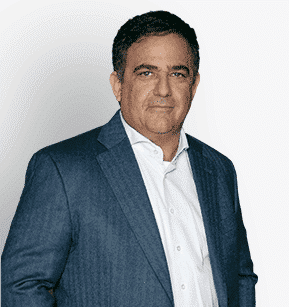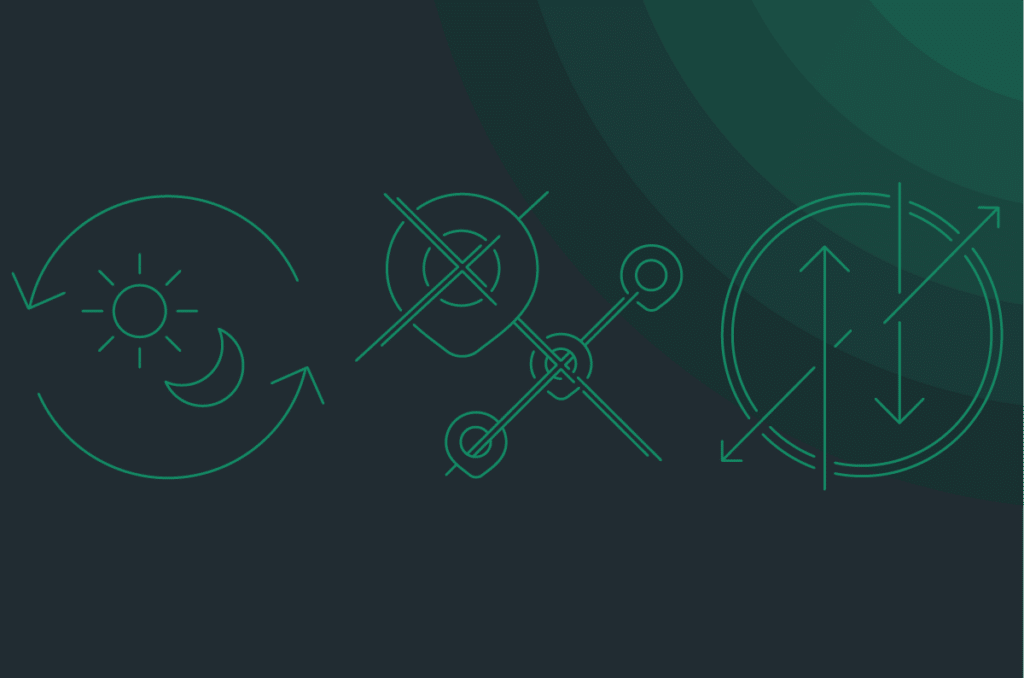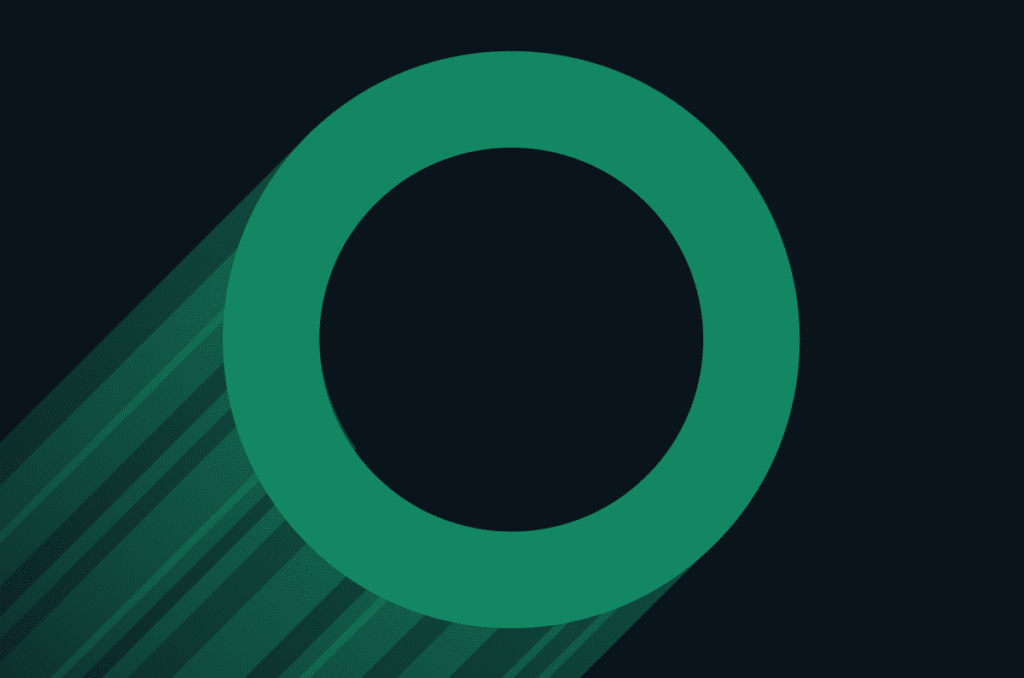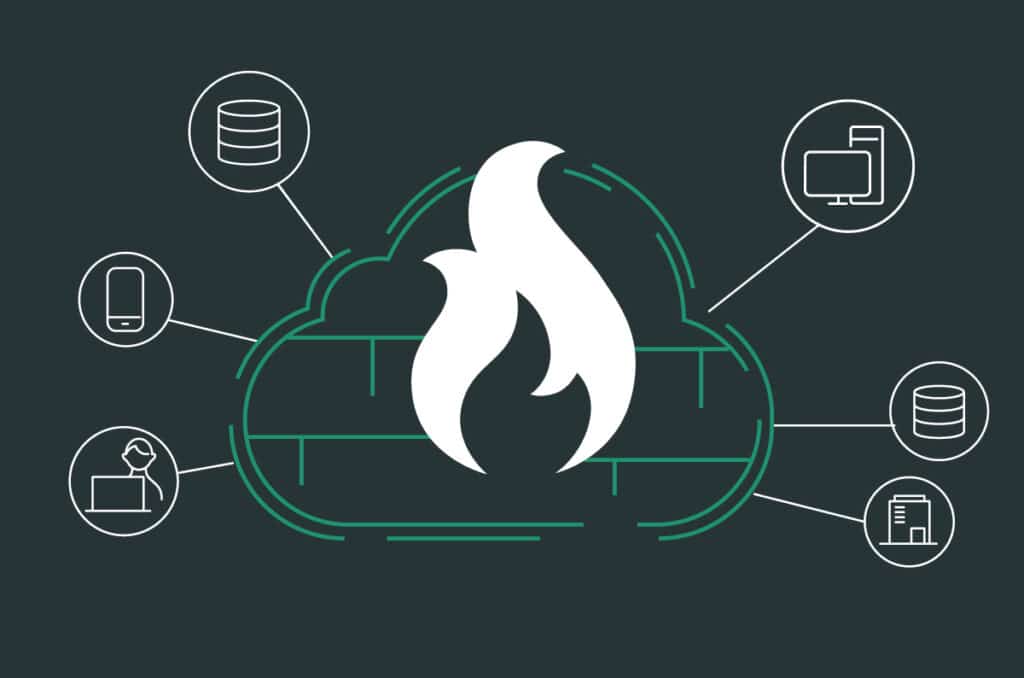As reported in global news, on October 7th, 2023, the Hamas terror organization has launched a brutal attack on Israeli cities and villages, with thousands... Read ›
Business Continuity at Difficult Times of War in Israel As reported in global news, on October 7th, 2023, the Hamas terror organization has launched a brutal attack on Israeli cities and villages, with thousands of civilian casualties, forcing Israel to enter a state of war with Hamas-controlled Gaza.
While Cato Networks is a global company with 850+ employees in over 30 countries around the world, a significant part of our business and technical operations is based out of Tel Aviv, Israel.
The following blog details the actions we are taking based on our Business Continuity Procedures (BCP), adjusted to the current scenario, to ensure the continuity of our services that support our customers’ and partners’ critical network and security infrastructure.
Business Continuity by Design
Our SASE service was built from the ground up as a fully distributed cloud-native solution. One of the key benefits of our solution architecture is that it does not have a single point of failure. Our operations teams have built and trained AI engines to identify signals of performance or availability degradation in the service and respond to them autonomously.
This is part of our day-to-day cloud operations, and as a result, downtime in one or more of our PoPs does not disrupt our customers’ operations. Our SASE Cloud high-availability and self-healing have already been put to the test before, and proved itself.
Our stock of Sockets has always been globally distributed across warehouses in North America, Europe and APJ. All our warehouses are fully stocked, and no shortage or long lead times is expected. In fact, we have been able to overcome global supply chain challenges before.
24x7x365 Support
Our support organization is designed to always be there for our 2000+ enterprise customers, where and when they need us. We are committed to ensure that support availability to our customers remains intact even during adverse conditions like an armed conflict or a pandemic.
We operate a global support organization from the United States, Canada, Colombia, United Kingdom, Northern Ireland, The Netherlands, Israel, Poland, Ukraine, Macedonia, Singapore, Philippines and Japan. All teams work in concert to deliver a 24/7/365 follow-the-sun service, making sure no support tickets are left unattended.
Customers who require support should continue to contact us through our standard support channels, and will continue to receive the support levels they expect and deserve.
BCP Activation in Israel
The Cato SASE service is ISO 27001 and SOC2 certified as well as additional, global standards.
A mandatory part of such certifications is to have Business Continuity Procedures (BCP) in place, practice them periodically, and improve or fine-tune as needed.
Our BCP was not only tested synthetically, but was successfully activated during the COVID-19 epidemic. In March 2020, we moved our entire staff to work remotely. Using the ZTNA capabilities of Cato SASE Cloud, the transition was smooth, and no customers experienced any impact on the service availability, performance, and support.
We have now re-activated the same BCP for our staff in Israel. Our technical organizations are able to securely connect remotely to our engineering, support, and DevOps systems and continue their work safely from their homes.
Beyond BCP
In the current situation, we are taking additional steps to further our increase our resiliency.
October 8th, 2023:
We have extended shifts of our support teams in APJ to reinforce the teams in EMEA.
We have assigned T3 support engineers to T1 and T2 teams to ensure our support responsiveness continues to meet and exceed customers' expectations.
October 10th, 2023:
We have temporarily relocated select executives and engineers to Athens, Greece. We now have HQ and engineering resources available to support our global staff and cloud operations even in extreme cases of long power or internet outages, which aren’t expected at this time.
The Way Forward
Israel had faced difficult times and armed conflicts in the past, and always prevailed. We stand behind our Catonians in Israel and their families and care for them during this conflict. Our success is built on the commitment of our people to excellence in all facets of the business. This commitment remains firm as we continue our mission to provide a rock-solid secure foundation for our customers’ most critical business infrastructure.
Today, we announced our largest funding round to date ($238M) at a new company valuation of over $3B. It’s a remarkable achievement that is indicative... Read ›
Cato: The Rise of the Next-Generation Networking and Security Platform Today, we announced our largest funding round to date ($238M) at a new company valuation of over $3B. It’s a remarkable achievement that is indicative not only of Cato’s success but also of a broader change in enterprise infrastructure.
We live in an era of digital transformation. Every business wants to be as agile, scalable, and resilient as AWS (Amazon Web Service) to gain a competitive edge, reduce costs and complexity, and delight its customers. But to achieve that goal, enterprise infrastructure, including both networking and security, must undergo digital transformation itself. It must become an enabler, instead of a blocker, for the digital business. Security platforms are a step in that direction.
Platforms can be tricky. A platform, by definition, must come from a single vendor and should cover most of the requirements of a given enterprise. This is not enough, though. A vendor could seemingly create a platform by “duct taping” products that were built organically with others that came from acquisitions. In that case, while the platform might check all the functional boxes, it would not feel like a cohesive unity but a collection of non-integrated components. This is a common theme with acquisitive vendors: they provide the comfort of sound financials but are hard pressed to deliver the promised platform benefits. What they have, in fact, is a portfolio of products, not a platform.
[boxlink link="https://www.catonetworks.com/resources/cato-named-a-challenger-in-the-gartner-magic-quadrant-for-single-vendor-sase/"] Cato named a Challenger in Gartner’s Magic Quadrant for Single Vendor-SASE | Get the Report [/boxlink]
In 2015, Cato embarked on a journey to build a networking and security platform, from the ground up, for the cloud era. We did not want just to cover as many functional requirements as fast as possible. Rather, we wanted to create a seamless and elegant experience, powered by a converged, global, cloud-native service that sustains maximal security posture and optimal performance, while offloading unproductive grunt work from IT professionals. A cohesive service architecture that is available everywhere enabled us to ensure scalable and resilient secure access to the largest datacenters and down to a single user.
We have been hard at work over the past eight years to mature this revolutionary architecture, that Gartner called SASE in 2019, and rapidly expand the capabilities it offered to our 2,000+ customers. We have grown not only the customer base, but the scale and complexity of enterprises that are supported by Cato today. In the process of transforming and modernizing our customers’ infrastructure we replaced many incumbent vendors, both appliance-centric and cloud-delivered, that our customers could not find the skills and resources to sustain.
Building a new platform is ambitious. Obviously, we are competing for the hearts and minds of customers that must choose between legacy approaches they lived with for so long, the so-called “known evil,” or join us to adopt a better and more effective networking and security platform for their businesses.
Today’s round of financing is proof that we are going in the right direction. Our customers, with tens of thousands of locations and millions of users, trust us to power their mission critical business operations with the only true SASE platform. They are joined today by existing and new investors that believe in our vision, our roadmap, and in our mission to change networking and security forever.
SASE is the way of the future. We imagined it, we invested in it, we built it, and we believe in it.
Cato. We ARE SASE.
I read with some surprise the interview with Zscaler’s CEO, Jay Chaudry, in CRN where he stated that the “network firewalls will go the way... Read ›
The Future of the Firewall is in the Cloud I read with some surprise the interview with Zscaler’s CEO, Jay Chaudry, in CRN where he stated that the “network firewalls will go the way of the mainframe,” that “the network is just plumbing” and that Zscaler proxy overlay architecture will replace it with its “application switchboard.”
Well, our joint history in network security teaches us a very different lesson. This is my take.
The first time I met Jay Chaudry was in an office space in Atlanta back in 1995. We were starting to build the Check Point partner network and Jay just started SecureIT, a reseller, service, and training business focused on our product.
Jay has always been a visionary. He bet that the Check Point network firewall would beat established firewall players like Raptor, Gauntlet TIS, and Sidewinder. Have you heard any of these names? I guess not. They were all proxy firewalls, which protected specific applications using per-application code and were the established market leaders at the time. Jay correctly understood that a more general-purpose firewall, the network firewall, would win that battle by embedding security directly into the network and applying inspection to all traffic, not just application traffic.
The network firewall was initially met with skepticism and only visionaries like Jay saw the future. But with the proliferation of protocols and applications, and the growing complexity of the security stack, it was clear that the network firewall was the winning approach. The proxy firewalls faded. Jay made the right bet building his business around the Check Point Network Firewall and used this success and his entrepreneurial spirit to launch Zscaler.
Zscaler offered a secure web gateway (SWG) as a service. It solved an urgent problem - users wanted direct internet access from anywhere without the need to backhaul to corporate VPN concentrators appliances or data center firewalls. With the public Internet being the underlying network, Zscaler only option was to build its solution as an overlay proxy.
Following SWG came the need for CASB, which used the same proxy architecture applied to SaaS applications. Lastly, ZTNA used the same approach to access private apps in datacenters. This progression created a multibillion-dollar security company. But, as these various products appeared on scene, so did complexity. Enterprises had to maintain their MPLS networks, SD-WANs, and network firewalls and layer on top of them the SWG, CASB, and ZTNA proxies.
[boxlink link="https://www.catonetworks.com/resources/migrating-your-datacenter-firewall-to-the-cloud/"] Migrating your Datacenter Firewall to the Cloud| Download the White Paper [/boxlink]
This complex reality was what Gur Shatz and I set out to change as we launched Cato Networks in 2015. We created the architecture and category that Gartner would later call SASE declaring it the future of wide-area networking and network security. The idea behind Cato is simple. Create a cloud service that converges the networking and network security capabilities provided by appliances and the ones delivered by proxies like SWG, CASB and ZTNA. The resulting cloud service will make these capabilities available through a single-pass architecture delivered elastically all over the world and to all edges – physical locations, cloud and physical data centers, remote users, IoT, etc. Much like an AWS for networking and security, Cato SASE enables enterprises to use these capabilities without owning the stack that delivers them. SASE enables each converged capability to contribute to the effectiveness of all the others. The network provides 360-degree visibility, which enables complete real-time context that drives real-time decisions and accurate detection and response.
Essentially, what Gur and I created was a brand-new form factor of the network firewall built for the cloud. I was lucky enough to create with Gil Shwed the first one: the software form factor that was Firewall-1. I was lucky enough to write the first check to Nir Zuk that created the second form factor of the converged NG-Firewall appliance at Palo Alto Networks. SASE and Cato’s implementation of it are the third form factor: the Secure Cloud Network.
Jay, firewalls are here to stay, just using a different form factor. It is Zscaler’s proxy approach that is going away. You knew better 28 years ago; you should know better now.
In the new digital world, we’re no longer restricted by borders and can innovate with our colleagues and partners all over the world. ABB FIA... Read ›
Driving Into Action: Our New Partnership with the TAG Heuer Porsche Formula E Team In the new digital world, we’re no longer restricted by borders and can innovate with our colleagues and partners all over the world. ABB FIA Formula E World Championship has been growing year-on-year and has become the testing ground for the latest innovations not only for Motorsport, but the automotive industry as a whole. So, I am thrilled to announce that today we are launching a partnership with the TAG Heuer Porsche Formula E Team as its official SASE partner.
Porsche has a rich racing history dating back to the 1950s. In Formula E’s sixth season, Porsche made its long-awaited return to top-flight single-seater racing and has continued to make positive strides over the past three years. Last season saw the team secure their first race win in Formula E with an impressive 1-2 finish in Mexico City.
At Cato, we pride ourselves on helping our customers collaborate securely from anywhere on the globe by eliminating the complexities of point solutions and delivering secure network architecture through the power of a single-vendor SASE cloud platform. Global motorsport competitions are often labeled as traveling circuses, as they assemble, race, pack up, and move on to the next country on a weekly and monthly basis. The nature of the Formula E racing season, along with the team’s extensive use of technologies and data, has meant that cloud-native networking and security infrastructure have become a cornerstone of the team’s strategy.
Click here to enlarge the image
The decisions that the TAG Heuer Porsche team makes are comparable to those of any business organization. When you need to analyze every data point from tire temperatures to battery depletion in real-time and the team’s HQ is located on the other side of the world, it’s vital the team can make split second decisions to make a difference on track.
These decisions are informed by vast datasets that the team has collected throughout each Formula E event and the car’s extensive development. These data-informed insights are critical for the team’s on-track performance and must be taken in a way that minimizes security and operational risks as well as optimal application and data access.
Cato will play an important role helping the TAG Heuer Porsche Formula E team to optimize operations and provide secure access to the network and SaaS applications all season long. We are excited and optimistic about the season and working together to… WIN!
“Join us by supporting the TAG Heuer Porsche Formula E Team when Formula E Season 9 kicks off in Mexico City on January 14th and stay tuned for more details on the partnership in the coming weeks.”
Find out more about the TAG Heuer Porsche Formula E team here: https://motorsports.porsche.com/international/en/category/formulae













